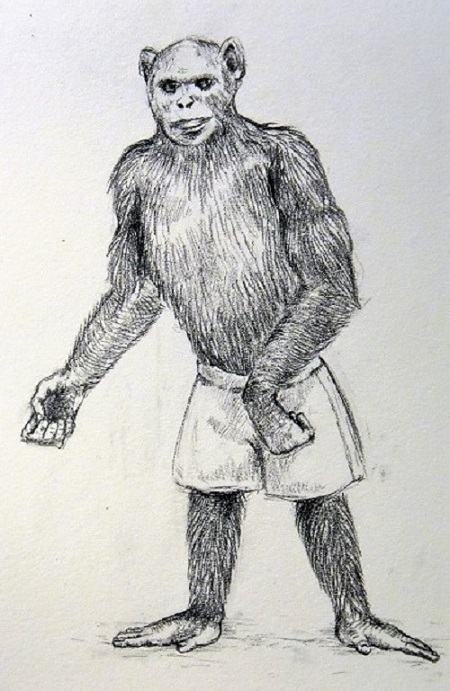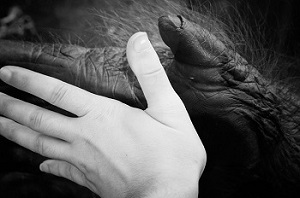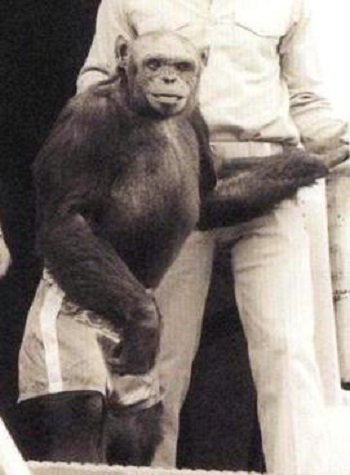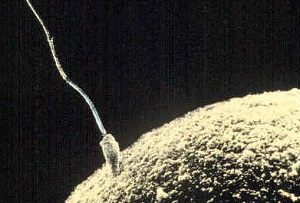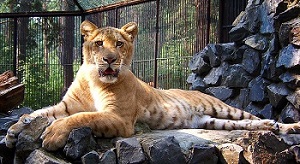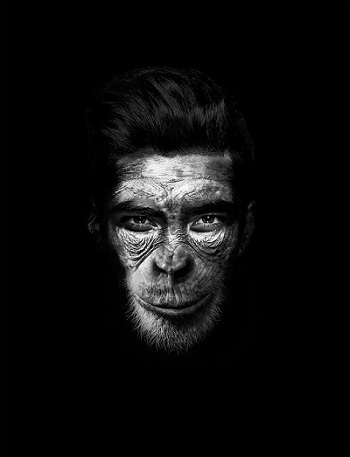Oliver was a young chimpanzee, likely kidnapped from the Congo at an early age, and sold to animal trainers in 1970. Frank and Janet Berger noticed as the chimp aged that he had very human-like traits, such as walking upright and having features that resembled an old man. Oliver was trained by the Bergers for 7 years, when another peculiar trait made itself known to the pair of trainers.
Oliver seemed to be attracted to Janet, much more so than any of the female apes which were also kept by the Bergers. To her displeasure, Oliver may have tried to mate with her. This was the end of the road for Oliver with the Bergers, and they sold him to a lawyer named Michael Miller.
Miller had no use for the poor chimp and shipped him off to the Enchanted Village, an amusement park in California. The venture failed a year later, but the owner kept a small show going with Oliver through 1982. During this time Oliver was seen performing a number of tricks, such as wearing clothes, smoking a pipe, or even mixing drinks. These “human-like” activities again sparked the discussion that Oliver was some sort of hybrid.
But, after 1982, life got even harder for Oliver the Humanzee. He was transferred to a wild animal training center in California but was quickly sold a few years later because he did not get along with the other chimpanzees. Unfortunately for Oliver, he was sold to a laboratory animal leasing company. Though the company recorded that he was never used in experiments, his intake evaluation documented serious previous abuses by his keepers. Further, he had to spend the next 9 years in a small cage at the company, in a sort of chimpanzee limbo.
Oliver’s fame as the “Humanzee” eventually inspired a petition for his release. In 1998, Oliver was moved to the sanctuary Primarily Primates. By this time, Oliver the Humanzee was mostly blind, and he was arthritic from being in laboratory cages for many years. Oliver lived the rest of his life in this facility, with slightly more comforts and freedom than he had previously had. Oliver died at approximately 55 years old, on June 2, 2012.
Though the story of Oliver is tragic, the story of human and chimpanzee hybrids is much older. The story of Oliver the Humanzee is a story about human discovery, mad scientists, and international competition.
Was Oliver really a Human/Chimpanzee Hybrid?
Not even a little bit. Oliver was fully a chimpanzee, which was confirmed by a geneticist in 1996. As you can see in the picture below, humans have 23 pairs of chromosomes, or 46 chromosomes total. Chimpanzees have 24 pairs of chromosomes, or 48 total. Thus, a human-chimpanzee or “humanzee” would have 47 chromosomes, with one of the chromosomes being unpaired.
Oliver simply had a unique look and years spent with the Bergers, who taught him many human behaviors and raised him like a child. What Oliver the Humanzee really represents is an incredible intelligence, social understanding, and ability to adapt to unknown circumstances inherently present within all apes. Unfortunately, that is not why most people were interested in Oliver.
Since the early 1900s, there have been rare and infrequent reports of some scientist or another trying to create a human-chimpanzee hybrid. The practice was decried by mainstream scientists and ethicists, many of which called the potential hybrid a violation of human rights. Still, scientists persisted.
In the 1920s, there came reports from Russia that a scientist there was attempting to create the hybrid. Ilya Ivanovich even documented artificially inseminating three female chimps with human sperm, but no successful pregnancies were established. This research was possibly expanded in China in 1967, with some reports saying that Chinese scientists had actually had a successful pregnancy which led to the first hybrid. These reports were never confirmed, though research continued.
In 1977, American Scientist J. Michael Bedford reported in studies that human sperm has the ability to penetrate various eggs from members of the monkey order, such as gibbons. While this by no means says whether the offspring would be viable, it essentially proved that the concept was at least possible. More recently, claims have been made by Gordon J. Gallup that a humanzee was once created in a lab in Orange Park, Florida and was euthanized days later. But, when asked to confirm what he had said, Gallup simply said that they were only rumors and likely not true.
Still, as recently as 2010, the issue persists. According to a paper published that year, the U.S. Patent and Trademark Office rejected a patent for the creation of a humanzee, though the decision was being appealed. To some, a humanzee represents the perfect research subject: just human enough to do the trick, but not human enough to have rights which protect them from involuntary testing.
Is Creating a Humanzee Hybrid Possible?
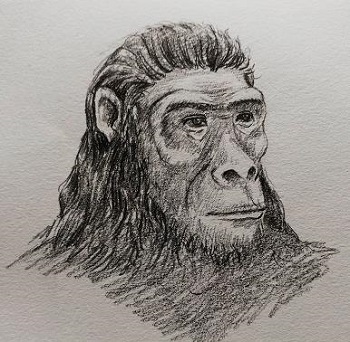
Humanzee sketch (and sketch of Oliver) by Desiree Walker
The truly bizarre part of Oliver’s story, like all great hoaxes, is that there was an element of truth to the idea of a humanzee. Theoretically, a human-chimpanzee hybrid is indeed possible. Scientists have documented a number of hybrid animals, but hybrids have been known long before modern science.
The mule, a cross between a female horse and a male donkey, is a well-known farm animal that has long been known for its power and endurance. However, many people do not know that mules are sterile. Mules are sterile because horses and donkeys have a different number of chromosomes. Like most hybrids, this gives them an odd number of chromosomes. An odd number of chromosomes cannot divide equally, therefore gametes (eggs and sperm) cannot be created in these animals.
Humans and chimps, like other possible hybrid combinations such as the dolphin-whale hybrid wolphin, the bison-cattle blended beefalo, or lion-tiger combination liger, share a number of genes on various chromosomes. Out of the 23 pairs of chromosomes humans have, they share genes on 9 of these chromosomes. Because chimpanzees have 24 pairs of chromosomes, a humanzee would have an uneven number of chromosomes.
For this reason, a humanzee would likely be sterile. This means that a humanzee would not be quite human, nor quite chimpanzee. In all reality, scientists would be creating a brand new organism. While this may sound appealing for the purposes of drug and medical testing, this would likely be a terrible idea. Even though the humanzee might share many genes with humans, the expression of these genes and the extra chromosome would be completely different from a human system, and not predictive of actual human results.
Should We Create a Humanzee?
While human history is likely the confluence of several species that ended up in a human hybrid, creating a humanzee is not the same thing. When humans mixed with Neanderthals and other pre-human groups, they created non-sterile hybrids and introduced a small number of new genes to the population.
In creating a humanzee, scientists would be crossing some dangerous lines in science and ethics. Not only would they be creating an animal with the potential for significant genetic defects, they would also be creating an animal likely capable of thought, feeling, and a genetically human brain. Yet, this organism would be owned by the scientists who created it and would have nothing close to human rights. For most, this ethical dilemma drives them towards genetic modification, in which human genes are implanted into cells and small animals for study.
However, with new patents and science being developed every day, we may still see the day when a humanzee is created in a laboratory. While the implications on human and animal ethics are enormous, this has historically failed to stop some of humanities worst ideas. Science has already implanted human genes into animal models to study their biochemistry, and a more advanced version of this is still conceivable to many scientists.

